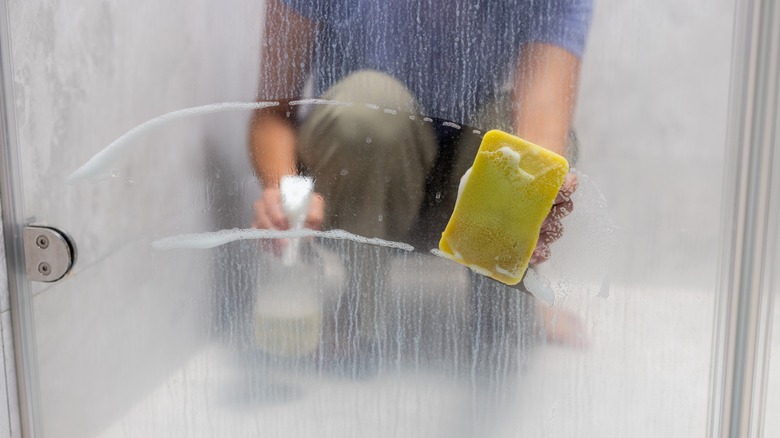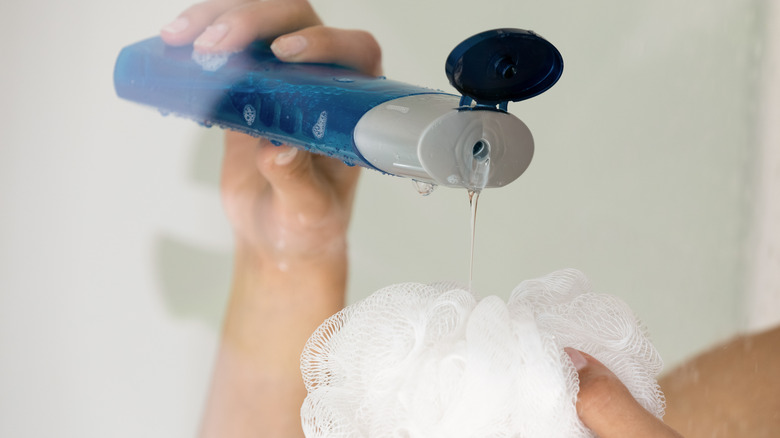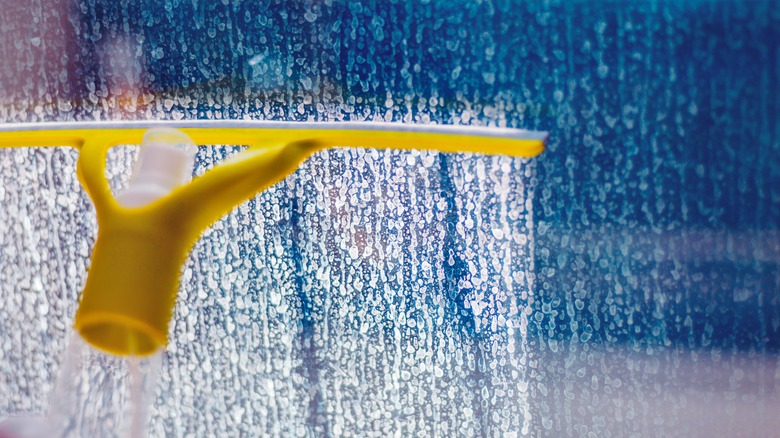Swap Your Bar Soap For This Alternative To Help Keep Your Bathroom Sparkling Clean
We're always on the lookout for products or hacks that will make cleaning the house just a bit easier. And we've all noticed that when it comes to keeping the bathroom spiffy, the bar soap we love ends up leaving whitish-beige buildup all over the shower, deposits in the corners of the walls and a general haze. However, if you switch your bar soap for shower gel, this can help prevent the buildup of soap scum, which will reduce the time spent scrubbing those beige deposits.
It turns out that liquid soap isn't soap. It performs the same function, gets us super clean, and has many added moisturizers, but its formulation is closer to that of detergent. Many washes and shower gels contain potassium hydroxide, an ingredient that makes it more water-soluble than regular soap, which means it rinses away more easily. Another reason liquid soap doesn't build up soap scum is that it contains tetrasodium EDTA, which essentially acts as a water softener. That loosens the grip of the calcium and magnesium chlorides in hard water. Bar soap, on the other hand, often contains paraffin, one of the main culprits that spreads a white film over your bathroom surfaces. To be fair, though, scum results from a chemical reaction that takes place when paraffin and other ingredients in bar soap meet the reality of hard water.
Hard water also contributes to soap scum
In addition to paraffin, bar soap also contains sodium stearate. When those molecules meet up with hard water, which contains calcium and magnesium ions, this combo contributes to the formation of soap scum. It won't simply rinse away, and that's when the scrubbing brushes need to come out.
An incredible 85% of U.S. homes have hard water. Its residue is most visible on stainless steel sinks in the kitchen, but there's also a mineral buildup on shower heads that looks like beige clay. You may see a cloudy film left behind on glass shower doors, too. Bar soap gets a bad rap — after all, it does tend to melt and get caught in little globs all over the bathroom — not to mention the residue left behind in the sink by toothpaste and moisturizer. But, hard water is a major contributor to non-sparkling surfaces. Liquid soap can offset these issues by softening the water and rinsing away more easily.
Liquid soap ideas and preventing soap scum
One alternative to bar soap is The Good Fill unscented body wash, available for about $20 and sold in glass pump bottles. The product is 100% biodegradable, and you can send the company a pouch that they will clean, refill, and send back each time you need more gel. In the shower, we recommend you place anything made from glass into a secure shower caddy. Another eco-friendly brand, Blueland, provides a "forever bottle." Blend water and their powder refills, then shake to create a body wash gel ($12); it comes in three fresh scents.
A quick note: while liquid soap reduces soap scum, it may not totally eradicate it. As you're considering switching to shower gels and ditching the bar soap, clean off the ghostly film and take measures to prevent its return. Use the cleaner most appropriate for your shower walls. Alternatively, mix 1 cup of baking soda with ½ cup of white vinegar in a bowl, form it into a paste, leave it on the surface for 15 minutes, then scrub off. Clean the area from the top down with a rag, then rinse. Using a clean, dry rag, consider buffing the walls with either lemon oil or car wax to prevent the return of that soap scum haze. Another preventive measure is to use a squeegee on the walls after every shower and dry them so the hard water doesn't have a chance to leave behind white droplet marks.


